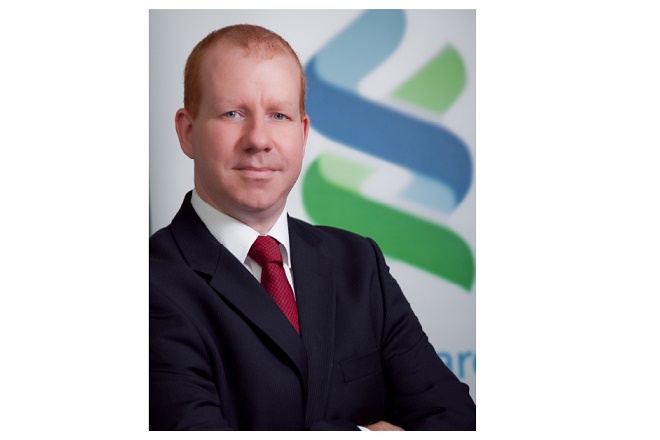Opinion: 2016 – adapt to a changing landscape

By Steve Brice, Chief Investment Strategist, Standard Chartered
2015 was an incredibly challenging year for investors with equities, bonds and commodities in most areas seeing negative returns and heightened volatility.
2016 is expected to be just as difficult. Adapting to the changing environment will be vital, but overall we expect global equity markets to generate positive returns and outperform bonds next year.
The key question is whether the 15 per cent decline in global equities in mid-2015 is indicative of a forthcoming recession in the US? If it is, then it clearly warrants a more defensive positioning by investors.
However, we take a different view in our outlook for 2016. While the US economy is likely heading into late-cycle, the current economic expansion is likely to continue well into 2017.
Normally, US recessions are caused by the US Federal Reserve (Fed) tightening its monetary policy aggressively as the focus shifts from supporting growth to fighting inflation. In contrast, 2015 was characterised by strong disinflationary pressures. While these are likely to abate as we go through 2016, excessive capacity in Europe and China is likely to cap inflationary pressures globally. Therefore, we expect the Fed to tighten monetary policy only very gradually.
Elsewhere in the world, growth is expected to pick up modestly – notably in Europe and Japan – as monetary and fiscal policies ease somewhat. The exception to this outlook remains China, where structural headwinds are likely to constrain growth, looser policies notwithstanding.
What does this mean for investors?
Corporate earnings are likely to remain in an uptrend, especially in developed markets. In the US, 2015 earnings were hit by collapsing oil prices. This is likely to become less of a headwind in 2016 as oil prices bottom out. Meanwhile, we expect the domestic demand picture in the euro area and Japan to strengthen, which means corporate earnings will become less reliant on the export sector and on weaker currencies.
In Asia ex-Japan, earnings are also expected to accelerate modestly, although consensus expectations for 6 per cent earnings growth in 2016 (source: Factset) may prove a little optimistic. We remain negative on the outlook for non-Asia emerging markets, although a stabilisation in oil prices would be a significant positive for this region.
It is against this backdrop that we expect global equity markets to generate positive returns in 2016, with the euro area and Japan markets likely continuing their outperformance for the second straight year.
Of course, it is not all positive. 2016 promises to be another challenging year. Volatility normally picks up as we head towards the end of an economic cycle and we see little reason for this time to be different.
That said, equity market returns are normally strongly positive in the 12-24 months after the Fed embarks on its tightening cycle. Therefore, investors need to balance the risk of potentially significant declines in risky asset classes such as equities and high yield bonds and the possibility of missing out on a subsequent rally.
We believe investors can balance these conflicting pressures by maintaining a preference for global equities, but looking for ways to increasingly hedge against the risk of rising volatility. A diversified approach is key, with a gradually increasing allocation to bonds, given our expectation for the Fed to hike interest rates only gradually. The key risk here is a jump in inflation that would lead to an accelerated tightening of monetary policy, higher yields and capital losses for bond investors.
The expectation that interest rates will remain at very low levels means investing to generate stable income remains a valid investment style in 2016, in our opinion. We recommend a three-pronged approach while considering the attractiveness of different income-generating asset classes – income potential, the scope for capital growth and the drawdown risk.
We believe investors should slightly reduce their exposure to high dividend-yielding equities, given the risk of significant declines again in 2016, and increase their allocation to bonds.
Naturally, the yields on offer from government bonds issued in US dollars, yen and euros are meagre at best, and often negative and investors may consider US high yield bonds as an alternative. While a lot of the news flow from the US high yield sector is currently negative, the 8.7 per cent yield (Barclays US Corporate High Yield index) looks attractive absent a sharp deterioration in economic conditions. Meanwhile, the yield for preferred equities remains attractive and we believe the drawdown risk is lower than other areas, such as real estate investment trusts.
So 2016 is likely to be a tough environment for investors. Although full-year returns are likely to be better than in 2015, it is unlikely to be smooth sailing. Meanwhile, some of the recent trends may fade or reverse at some point in 2016 – for example, the strength of the US dollar, oil price weakness and emerging market under-performance.
Given all of this, the key strategy for investors in 2016 would be to ‘adapt to a changing landscape’.
(Based in Singapore, Steve is a key member of the Bank’s Global Investment Council, and also acts as an adviser to the Discretionary Portfolio Management division. Steve has over 20 years of financial markets experience in senior positions, including previous roles as Head of Global Markets (Southern Africa), Head of Research (Middle East and South Asia) and Chief Economist (SE Asia), all with Standard Chartered Bank.)
